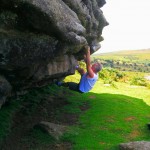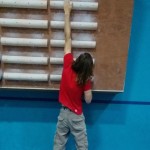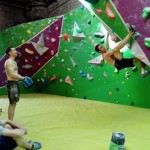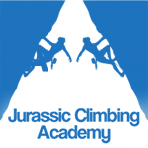Power Training
Now unlike strength training and power endurance training I love power training. Why, because instead of training the same pattern for hours you get to power through big moves, feet coming off, twisting and reaching. If you are not training power then you are missing out on some fun and you could be missing a trick!

Here again the old adage of the British trad climber to ‘climb more and you will get better, no need for any of that plastic holds and training stuff!’ did kind of work. By climbing more they certainly improved their endurance and to a certain extent their power as well. However most of them never attempted anything past vertical, certainly only a very few attempted roofs. Therefore they never really impacted on power! Once again the process was slow and the majority stalled at their on-sight level forever. The evidence is all around us. Just watch a video of a Shaun McColl or Alex Megos training session. They didn’t get where they are just by climbing!
So what is Power? Typically it is the movement needed to pull through steep sport routes and very hard boulder problems. Power comes in when you need to make strenuous reaches or quick handhold grasps on steep ground . So power does rather sound like what we are trying to achieve, to power through the moves!

The obvious power training exercises are; Big Move Boulder Problems (find a steep boulder problem with big moves between positive holds and climb this 6 times with a fairly long rest of 4 minutes in-between; Feet Off Bouldering (find a steep boulder problem with big positive holds and climb this 6 times with 5 minutes rest in-between); Power Pull-Ups (mount a pull-up bar with hands at shoulder width apart, make an explosive pull-up, hold the top, lower down at a slower controlled rate, explosively power straight back up, repeat 5 times, rest for 4 minutes, then repeat a second and third set); Campus Laddering (mount the bottom rung with both hands and then reach up to the next rung with one hand, then the other hand to then next rung, never matching until the top rung, then drop down hand over hand again, rest for 4 minutes, then repeat for a second and third set); Campus Lock Offs (mount the bottom rung with both hands, pull-up with both hands and then lunge with one hand as far as possible and grip a rung, drop back down and straight away repeat with the other hand, do 6 touches per hand and then rest 4 minutes, then repeat a second and third set) .
Any power based exercise on boulders should have a medium number of reps of four or six per set. Also a small number of sets of two or three. When you can do the three sets simply go for longer moves, add weight or step up the angle!
If you remember from our article Focus On – Strength Training, the problem is that if you are not careful you end up just practicing and not improving! Try adding specific power exercises towards the middle of your session. Such as feet off boulder and campus lock-offs and you will see some major results. Also, at least once per week put in a pure weights, a pure gym or a yoga session.
And don’t forget to work the antagonist muscles (the ones that work in the opposite way to the ones you mainly use). If these become imbalanced a loss of strength can occur and worse, injury. So an example is to work the biceps with weights to strengthen them against the triceps used in climbing.

Another major addition to your climbing power training is yoga. Many people underestimate the power of using yoga in climb training as it looks rather simple and easy. It is neither, just try a full on two hour yoga session to see if you can power into the moves for the whole session! But whatever you do attend a yoga teacher that teaches you to master the poses and series. Rather than one that just takes your money to copy them!
And if you were wondering. When I added power training to my strength training, power endurance training, weight, gym and yoga, I went from mid F6 to mid F7s routes and from V3 to V6 boulders in 6 months. I stepped back for a while to consolidate my number of routes and boulders pyramid and went again, this time pushing into F8 and V9!
Give it a go and it will work for you, but remember to be specific. If you want some further advice then contact us through the button below to arrange a coaching session.
Please be aware that the above article applies to adults and not youngsters. Also that you must stop immediately if you feel any pain and consult a medical practitioner.
Great coaching makes great climbers!
Give us a try – Book Coaching


